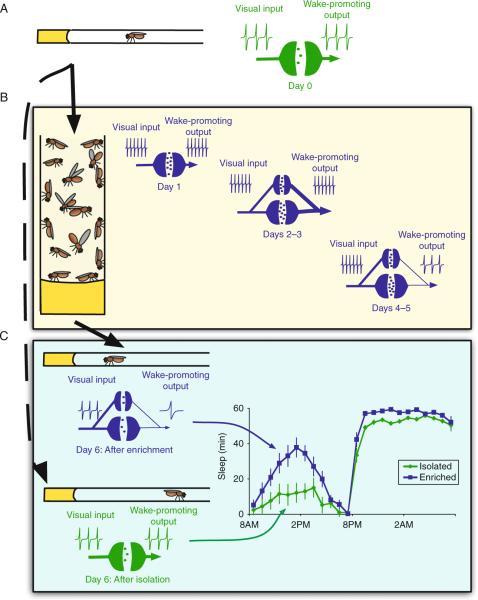Figure 3.4.
Proposed model for homeostatic regulation of synaptic terminals during social enrichment. (A) Under baseline conditions, wake-promoting output from the LNVs is modulated by signals originating from visual circuits in the medulla. (B) When exposed to a socially enriched environment, complex sensory stimuli likely drives increased activity in primary visual circuits that provide input to the LNVs. As a result, activity in the LNVs would become more strongly correlated with input signals from sensory circuits and synaptic connections to the LNVs become potentiated as new terminals are constructed. Following several days of hyperactivity and increased potentiation, homeostatic mechanisms may be induced in the LNVs to reduce overall firing rate and prevent chronic hyperexcitation. (C) Upon transfer to sleep monitors, flies are withdrawn from the complex visual stimuli that are associated with a socially enriched environment. As a result, wake-promoting output from the LNVs is decreased and socially enriched flies sleep more than their siblings that had been housed in social isolation.

